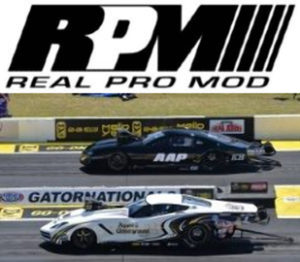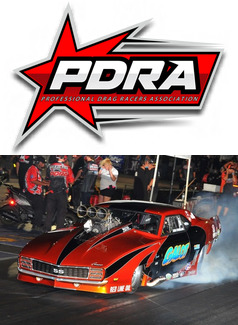Corporate Marketing Objectives and Evaluation Measures for Integrated Television Advertising and Sports Event Sponsorships
To determine how integrated TV advertising and event sponsorship should be evaluated, a theoretical framework derived from global exploratory research of academic literature and consulting reports of more than 50 authors was validated by 16 experts. To investigate how evaluation was managed in practice, 12 campaigns which had sponsored a televised event and placed advertisements during the broadcast of this event were analyzed via case studies. The investigated competitions included the Wimbledon Tennis Tournament in London and the Olympic Games in Sydney. The examined brands comprised automotive, financial services, retail chain, office equipment, and consumer goods. The study identified the keytechniques that lead to increased corporate sales four objectivesand necessary performance measures, which could be useful to all executives promoting brands through televised sport.
INTRODUCTION
Mansourpour (2007) points out “Sports sponsorship is a tool used increasingly by corporations to generate awareness, alter attitudes and attempt to influence consumer behaviour patterns. It is able to cut through clutter effectively, target specific consumer segments, and to generate beneficial...
SPOT: Scheduling Programs Optimally for Television
ABSTRACT
This paper introduces SPOT (Scheduling Programs Optimally for Television), an analytical model for optimal prime-time TV program scheduling. Due in part to the advent of new cable TV channels, the competition for viewer ratings has intensified substantially in recent years,and the revenues of the major networks have not kept pace with the costs of the programs. As profit margins decrease, the networks seek to improve their viewer ratings with innovative scheduling strategies. Our SPOT models for scheduling network programs combine predicted ratings for different combinations of prime-time schedules with a novel, mixed-integer, generalized network-based flow, mathematical programming model, which, when solved, provides an optimal schedule. In addition to historical performance, subjective inputs from actual network managers were used as input to the network flow optimization model. The optimization model is flexible.
Sports Broadcasting and Virtual Advertising: Defining the Limits of Copyright Law and the Law of Unfair Competition
I. INTRODUCTION
Constant technological development has introduced another player in sports broadcasting: virtual advertising, a form of digital technology that allows advertisers to insert computer-generated brand names, logos or animated images into previously recorded television programs or movies. In sporting events, the advertisements can even be inserted live as the game is played, as seen in Superbowl XXXIV on January 31, 2000. This technology has been used since 1995, but has not experienced a major breakthrough yet. Several Major League Baseball (“MLB”) teams have made use of virtual advertisements along the wall behind home plate.’ Beginning this 2000 season, the technology will be used in a minimum of twenty Sunday Night baseball games. Some teams in the National Basketball Association (“NBA”) display virtual advertisements on their billboards on the sideline, while many collegiate conferences have already made use of virtual advertising in their regular season and tournament broadcasts.
Benchmarking in Business through Talents: Beyond the Success in Motorsports
Abstract
In today‟s business environment, talent has become the potentially powerful source of competitive advantage. It is the fundamental building block to creating an organization which is capable of learning, innovating and changing, as well as executing new processes. It has been said that, talent management include the additional management processes and opportunities put in place for people in the organization that are considered to be talented. This paper intends to present a guide for racers to drive their companies by extending their success on the race tracks into business. This piece of work is based on the information gathered through in-depth interviews with three business owners that are also active racers. In the course of the interview, feedbacks regarding benchmarking through talent in motorsports and businesses were sought. The importance of talent management as seen through the prism of how top performers in motorsports have succeeded in driving their business while still producing impressive results on the race tracks was established in this study
Sponsorship and Congruity Theory: A Theoretical Framework For Explaining Consumer Attitude and Recall of Event Sponsorship
ABSTRACT
Sponsorship as a marketing communication tool has increased remarkably over the past two decades. Drawing from research in social psychology, a conceptual framework which affords a clearer understanding of the appropriate sponsoring of events when objectives are to improve consumer attitudes and increase recall is developed. The framework suggests that companies sponsoring events that provide a moderately inconsistent "fit" Bto their company will be viewed more favorably by consumers.
INTRODUCTION
Corporate sponsorship as a promotional acivity has increased remarkably over the past two decades and has been acknowledged as an increasingly important element of the communication strategy used by marketing-driven corporations in order to reach their customers. In 1996 sponsorship expenditure reached $13.5 billion worldwide (Sandler and Shani 1998) and is expected to reach $19 billion in 1999, making sponsorship the fastest growing area of promotion (Taylor 1999; Ukman 1995). Notably, more companies are involved in sponsoring leisure activities such as sports and music, while fewer are involved in the science...
Perspectives on the ROI of Media Relations Publicity Efforts
Executive Summary
This paper discusses several different approaches to deriving a Return-on-Investment (ROI) for the support provided by media relations publicity efforts within a marketing campaign. The primary questions discussed in the paper are whether it is possible to show that media publicity helped generate sales or other business outcomes, and can a financial return be attributed to the publicity?
Media relations publicity is a part of public relations that is generally included in Marketing Communications or MARCOM, Marketing PR or Media Relations-based Marketing. This paper is not concerned with the ROI of the many other aspects of public relations or their derivatives. The scope of the paper is more narrow and focused specifically on how to show the business value of a story in the media that has been placed as a result of public relations within the marketing campaign mix
Feasibility Study of Marketing Channels in the Music Industry
Abstract
Feasibility Study of Marketing Channels in the Music Industry Joseph C. Terry
The Feasibility Study of Marketing Channels in the Music Industry examines the current relationship between recording artists, and the television networks as compared with the relationships that they once had with networks before the digital revolution an the resulting ability to have media at your fingertips. The concept of a record label signing an artist, producing a record and using television for promotional purposes to reach maximum exposure has essentially become an obsolete business model. The digital revolution provides opportunities for businesses looking to capitalize on the availability and user-friendly nature of new media, and this revolution also provides the artist with a relatively simpler and cost-effective way of distributing their work.Through an analysis of the onset of this new media revolution...
An Examination Of Professional Niche Sport Sponsorship : Sponsors’ Objectives And Selection Criteria.
ABSTRACT
NICHE SPORT SPONSORSHIP
Gregory P. Greenhalgh July 29,2010
Sport organizations face tremendous pressure to secure sponsorship support (Copland et aI., 1996). Professional niche sports face even greater pressure as sponsorship support often determines whether an event can even take place (Sutton, 2009). Kuzma et al. (1993) stated the number one principle in selling sponsorships is establishing a close match between sponsor objectives and event characteristics. The purpose of the current study was to investigate the objectives sponsors aim to achieve through niche sport sponsorship as well as understand the selection criteria used to screen niche sport sponsorship opportunities. A survey of 352 sport sponsorship decision-makers, yielding a response rate of 25.3% (N = 89) with 32 usable professional niche sport sponsor responses revealed many interesting findings. Respondents indicated the most important objectives they aim to achieve through niche sport sponsorship include:
A Model Of Fan Identification: Antecedents And Sponsorship Outcomes
Modern sponsorship has moved from primarily a philanthropic activity to mutually advantageous business arrangements between sponsors and the sponsored (Abratt et al., 1987). The objectives being sought by sponsoring organizations are focusing more and more on exploitable commercial potential and bottom-line results (Cornwell, 1995; Hoek et al., 1993; 1997; Irwin and Sutton, 1994; Marshall and Cook, 1992; Wilson, 1997), and less on altruism or a sense of social responsibility without expectation of return. With this recognition comes an increased significance on identifying attitudinal and tangible behavioral outcomes to sponsorship efforts (Hoek et al., 1993). Despite the growth and recognized importance of sponsorship activities, academic research in this area has to date been limited (Cornwell and Maignan, 1998; Speed and Thompson, 2000). Sport is a natural area for sponsorship as it can carry very strong images,
The Influence Of Brand Preference On Brand Image Transfer: A Research On Brand Event Congruity In Sponsorships
ABSTRACT
Despite the growing attention for sponsorships, few studies have focussed on brand image issues. This article reports findings of an experimental research in which participants assessed the degree to which an event’s image associations were transferred to a brand through event sponsorships.
Results indicated that congruent sponsorships enhance image transfer, as opposed to incongruent sponsorships. This interaction effect was moderated by brand preferences. Participants with weak brand preferences ranked highest on brand image transfer in the incongruent condition, whereas participants with strong brand preferences were more likely to engage in image transfer when they were exposed to congruent brand – event sponsorship. The latter group ranked lowest on brand image transfer in the incongruent condition. The research utilizes a 2 x 2 factorial design where two variations of brand –
Dynamic Analysis Of Loads And Stresses In Connecting Rods
Abstract:
Automobile internal combustion engine connecting rod is a high volume production component subjected to complex loading. Proper optimization of this component, which is critical to the engine fuel efficiency and more vigorously pursued by the automotive industry in recent years, necessitates a detailed understanding of the applied loads and resulting stresses under in-service conditions. In this study, detailed load analysis under service loading conditions was performed for a typical connecting rod, followed by quasi-dynamic finite element analysis (FEA) to capture stress variations over a cycle of operation.
Evaluating Verification and Validation Methods in Knowledge Engineering
Abstract:
Verification and validation (V&V) techniques have always been an essential part of the knowledge engineering process, because they offer the only way to judge the success (or otherwise) of a knowledge base development project. This remains true in the context of knowledge management: V&V techniques provide ways to measure the quality of knowledge in a knowledge base, and to indicate where work needs to be done to rectify anomalous knowledge. This paper provides a critical assessment of the state of the practice in knowledge base V&V, including a survey of available evidence as to the effectiveness of various V&V techniques in real-world knowledge base development projects. For the knowledge management practitioner, this paper offers guidance and recommendations for the use of V&V techniques; for researchers in knowledge management, the paper offers pointers to areas where further wor
Media Effect In Commercial Sponsorship
Abstract
Various elements of brand identity contribute to brand image development; however, the role of marketing communications is particularly important in achieving brand image effects. In the case of advertising, two separate elements of communications, a message and a medium, combine to deliver particular brand image values. In the case of sponsorship both the message and media elements are not separate, but are inextricably linked and imagery is delivered by association with particular activities and events. Presents the result of focus group research which sought to examine the images transferred by different categories of sponsorship, i.e. sports and arts. The results show that goodwill, which is generated amongst consumers as a result of corporate sponsorship involvement, varies by sponsorship category. The results have important implications for sponsorship managers in terms of the choice of sponsorship category and the manner in which sponsorship investments are leveraged.
Women in TV Broadcast News: Reporters and Sources in Hard News Stories
Abstract
This study, conducted during a two-week period leading up to the 2012 Presidential Election, analyzed three prime time news broadcasts to determine whether male journalists reported more hard news stories than female journalists throughout a segment of increased political activity and whether male and female sources were used equally in said stories. The results showed that male reporters were assigned more hard news than female reporters, and males were a little more likely to assigned to hard news than soft news. Male sources were used more as experts in hard news by both male and female reporters. Actually female reporters relied on males as expert sources more than male reporters. The implications of the results of this study include female under representation as reporters and sources, probably continuing a perception of women as being in a lower social status than men.
1.1 Introducing the Sponsorship Market
Over the last decades sponsorship has evolved from a merely philanthropic activity to a popular marketing vehicle and consequently budgets have been rising (Nufer & Bühler, 2010). In the current sponsorship market million-dollar contracts are the rule rather than the exception. The majority of sponsorship investments is in the area of sports, such that sponsorship and media rights are the “main engines” of growth and professionalism in the global sports market (PricewaterhouseCoopers, 2011, p.4). In particular PricewaterhouseCoopers (PwC) projects a worldwide increase in spending on sports sponsorship to $45.3 billion in 2015 (PricewaterhouseCoopers, 2011). Sponsorship managers recognize the commercial value of associating their business with a well-known and beloved property. They hope to achieve a multitude of objectives, including brand equity and customer relations goals, through sponsorship. Yet in the current difficult economic situation, 1. Introduction
1.1.Background
Sponsorship has gained an important role in the marketing strategy within last decades (e.g. Cornwell & Maignan, Walliser 2003) while the traditional methods of advertising have lost some of the effect due to over-flow in the media mainstream. Consumers start understanding their power and expect respect for the individual and look for products and companies that share their values. Sports sponsorship is way to share interest with customer by supporting the same team or sports type. It is easier to create basis for dialogue around common interests. IEG Sponsorship Report which has conducted primary report on annual sponsorship spending estimates global sponsorship expenditures to 46.3 billion USD in 2011, with North American companies accounting for 18.2 billion USD. Europe is second biggest sponsorship market followed by Asia Pacific region. Central and South America is the fastest growing sponsorship region not the least because of the FIFA World Cup and Summer Olympic Games in 2014 and 2016 respectively.
Recovery by an individual investor for the fraudulent practices of corporate promoters has been difficult. The typical case arises when the promoter, acting through a controlled board of directors, causes the corporation to issue stock to him in return for inadequate consideration. Stock is then sold to the public without disclosure of the earlier sale to the promoter. The investor who buys into the corporation expecting to share proportionately in the assets finds that he gets farless because the transfer to the promoter has caused dilution of the stock's value.If the fraud is discovered and the individual stockholder attempts to seek redress,he is often deterred by the financial risks involved in maintaining a private suit,especially since his potential recovery will be limited by the number of shares he holds. Prior to the Securities Act of 19332 and the Securities Exchange Act of19343 the defrauded investor was limited to remedies available under state o rcommon law. While state blue... In this article, the central or principal issue for consideration is the appropriate standard that should be adopted at common law for foresight of consequences at common law where death has arisen out of an unlawful joint enterprise and the complicity or otherwise of a secondary party is in issue. Although the discussion is focussed upon the common law, the same issues of principle and policy arise in relation to potential reforms of the ’common purpose’ rule under the Criminal Codes. The matter has been considered and determined in two Australian High Court cases, Johns vR1 and Miller v R,2 and further by the Judicial Committee of the Privy Counci.1 in Chan Wing-Siu v R.3 In those cases, it was held that, at common law, a secondary party is guilty of murder where death or grievous bodily harm is foreseen I. INTRODUCTION.
One of the first steps most companies will take in connection with a potential capital raising or merger and acquisition transaction, or in connection with their consideration of a financial restructuringor their strategic alternatives generally, is the engagement of an investment banking firm. Too often, however, this important first step in a company’s exploration of strategic or financial alternatives is viewed as a perfunctory exercise involving the execution of a largely standard form prescribed by the investment banking firm to which changes are rarely made. In fact, the failure to carefully review and tailor an investment banking engagement letter to the particular situation facing, and the specific goals of, the client company presents significant risks not only to the client company but also to the investment banking firm notwithstanding their carefully proscribed standard form. As this paper will illustrate, the failure to devote an adequate amount of time and energy upfront in negotiating and drafting specifically tailored... Abstract
This paper presents a proposal of digital mediation for enhancing the communication between sports media and its user community. The proposal is based on a conceptual model and a proof of concept in the form of a Web application. It is believed that the proposed application can contribute to enrich sports media Web portals with innovative features and to strengthen the relationship with their user community, exploiting the potential contributions of its members. This project also aims at fostering user participation and sharing of opinions in sports media Web portals.
1. Introduction
In recent times, uses of the Internet are becoming relatively more interactive and user-oriented. The Web 2.0 and more recently the rise of Social Media have not only created new playing fields for communication and self-expression but also new forms of social behavior.... INTRODUCTION
People increasingly want more. More money, more time, more space. And it is no different with news. Audiences are expecting sports news on an as-it-happens-basis and, as digital technology continues to develop, that news is being readily presented. Not so long ago sports fans would have had to wait until the next day’s newspaper or the evening’s news broadcast, to find out the score of a sports match. Now, via a huge array of platforms, they can access the score, a match report, post-match comments, video highlights and every imaginable statistic almost as soon as the final whistle is blown. It’s telling of the age we are living in and the impact digital technology and, in particular, the internet, is having on traditional sports media. But what does it mean for sports journalists, sports journalism and the audience? The digital era is certainly presenting sports newsrooms with constant challenges. Not only is it...
Modern sponsorship has moved from primarily a philanthropic activity to mutually advantageous business arrangements between sponsors and the sponsored (Abratt et al., 1987). The objectives being sought by sponsoring organizations are focusing more and more on exploitable commercial potential and bottom-line results (Cornwell, 1995; Hoek et al., 1993; 1997; Irwin and Sutton, 1994; Marshall and Cook, 1992; Wilson, 1997), and less on altruism or a sense of social responsibility without expectation of return. With this recognition comes an increased significance on identifying attitudinal and tangible behavioral outcomes to sponsorship efforts (Hoek et al., 1993). Despite the growth and recognized importance of sponsorship activities, academic research in this area has to date been limited (Cornwell and Maignan, 1998; Speed and Thompson, 2000). Sport is a natural area for sponsorship as it can carry very strong images, ABSTRACT
Despite the growing attention for sponsorships, few studies have focussed on brand image issues. This article reports findings of an experimental research in which participants assessed the degree to which an event’s image associations were transferred to a brand through event sponsorships.
Results indicated that congruent sponsorships enhance image transfer, as opposed to incongruent sponsorships. This interaction effect was moderated by brand preferences. Participants with weak brand preferences ranked highest on brand image transfer in the incongruent condition, whereas participants with strong brand preferences were more likely to engage in image transfer when they were exposed to congruent brand – event sponsorship. The latter group ranked lowest on brand image transfer in the incongruent condition. The research utilizes a 2 x 2 factorial design where two variations of brand – ABSTRACT
The business model of motorsports has evolved to prominently feature corporate sponsorship as a B2B exchange mechanism in both the supply and marketing channels. As a result, racing series managers and teams are often simultaneously positioned as a buyer and seller in relation to their corporate sponsors. The sustainability of this business model rests with the propensity for motorsports organizations to consistently deliver value to both B2C and B2B firms and minimize potential role conflicts. This research highlights how actors in Formula One and NASCAR serve as channel facilitators to connect buyers and sellers within the motorsports sponsorship network.
INTRODUCTION
In the marketing of motorsports, racing series management and team organizations represent two key producers. In collaboration with various other channel members, these two entities produce a sports and entertainment product that is attractive to a large consumer audience
Consumer behaviour can be defined as the process and activities people engage in when searching for, selecting, purchasing, using, evaluating, and disposing of products and services so as to satisfy their needs and desires. The conceptual model in Figure 3–1 will be used as a framework for analyzing the consumer decision-making process. We will discuss what occurs at the various stages of this model and how advertising and promotion can be used to influence decision making. The five-stage decision process model of Figure 3–1 views the consumer as a problem solver and information processor who engages in mental processes to evaluate alternative brands and determine the degree to which they might satisfy needs or purchase motives. This model is a form of cognitive learning. Consumer learning has been defined as “the process by which individuals acquire the purchase and consumption
knowledge ABSTRACT:
NASCAR’s reward structure for rank order tournaments has been considered the exception to the rule in tournament theory due to the linear payout structure. We suggest that the rewards for drivers are nonlinear when you take into consideration the value of sponsorship time on camera and sponsor mentions during a race on TV. Given the importance of corporate sponsorship in NASCAR, we suggest that performance in a race provides additional benefits that are not captured in traditional tournament payments.
Introduction
Often sporting contests are used as a labor market laboratory to empirically test the implications of labor economics such as tournament theory (Kahn 2000). In sports, nonlinear payment structures are found in rank order tournaments such as golf (Ehrenberg and Bognanno 1990, and Melton and Zorn 2000) and marathon running (Frick 2003). Auto racing provides an exception to the... INTRODUCTION
Joint ventures (“JV”) may take a number of forms, but the basis on which they are formed is always a commercial collaboration in which two or more unrelated parties pool, exchange, or integrate some of their resources with a view to mutual gain, while at the same time remaining independent. This checklist provides a basis on which to consider the issues surrounding the formation of the JV and the ongoing legal rights and obligations between the parties.
Much of this checklist relates to a limited liability company form of JV but many of the issues raised will be equally relevant to the corporate form. In addition, there are tax and regulatory issues that will impact the structure and operation of the JV and they are not addressed in any great detail here.
As this is a generic checklist it... I. INTRODUCTION
Twenty years ago, I was a young student aspiring to a career in sports law. Following law school, I have had the good fortune to achieve my personal ambition and become a sports attorney while representing some of the best athletes in the country. In the process, I have visited many of the top universities and met many athletes throughout the country. For me, it all began when I attended law school at George Washington University and made the decision to combine my love for sports with my desire for law. Through some networking, I met two of the giants in the business, Bob Woolf and the late Larry Fleisher. They gave me two pieces of advice: First, take a lot of tax courses in law school, which was some of the worst advice I got in my life'''
Corporate sponsorship of events, especially sports, has become a commonplace marketing communications tool. Still at question in sponsorship-linked marketing programs is the economic value of the firm. Also largely unexamined in marketing research on sponsorship is the impact of participation outcomes. For example, is it more valuable to the firm to sponsor a winner, or is it simply participation and. thus, exposure that brings value to the firm? This study presents an anaiysis of the share-price impact of sponsoring the drivers in the Indianapolis 500 mile race to assess the value of motorsports victories and participation within a firm's sponsorship-linked marketing strategy. This approach allows the use of historical data in the analysis of the value of sponsorship. While the findings of the study suggest that autoracing sponsorships involving products that are not closely linked to the automotive industry...
Sports Sponsorship Effectiveness
Improving Sponsorship Value of Sports Property
Individual Recovery for Promoter’s Fraud Procedural Problems under S.E.C. Rule 10b-5
Foresight of Murder and Complicity in Unlawful Joint Enterprises Where Death Results
Negotiating Investment Banking Engagement Letters:
Communication Model for Sports Media Web Portals
Tackling The Digital Future Of Sports Journalism
A Model Of Fan Identification: Antecedents And Sponsorship Outcomes
The Influence Of Brand Preference On Brand Image Transfer: A Research On Brand Event Congruity In Sponsorships
Facilitating Sponsorship Channels in the Business Model of Motorsports
Consumer Behaviour And Target Audience Decisions
Time on Camera: An Alternative Explanation of NASCAR Tournaments
Model Joint Venture Agreement
The Art of Contract Negotiation
The Value of Winning in Motorsports: Sponsorship-Linked Marketing

























